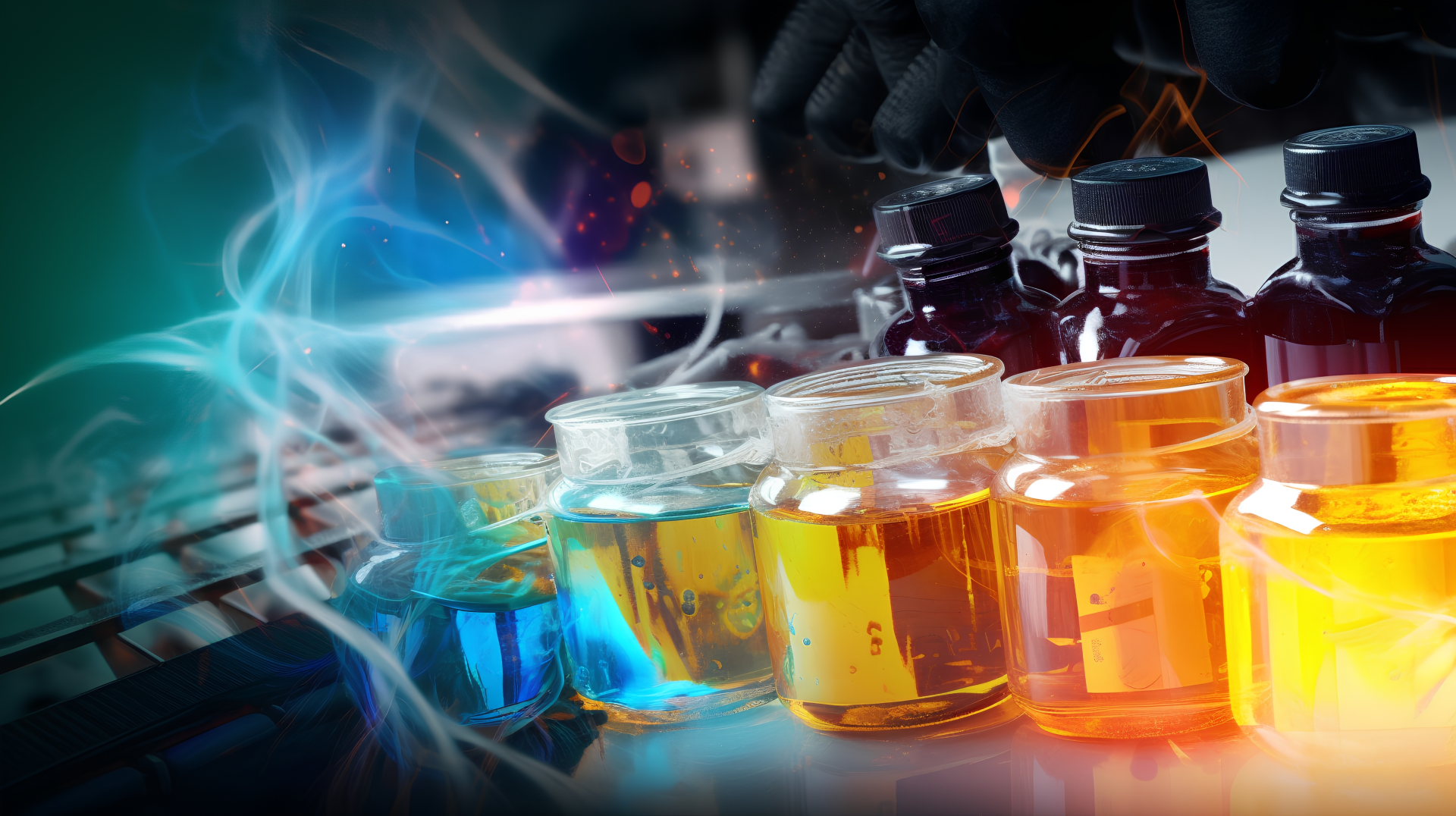

NMR-Based Quantification of Liquid Products in CO2 Electroreduction
NMR-Based Quantification of Liquid Products in CO2 Electroreduction on Phosphate-Derived Nickel Catalysts
One of the biggest challenges in modern chemistry is finding ways to make the industrial-scale electrochemical reduction of CO2 both economically and energetically viable. Researchers are tackling this challenge in a number of ways, from finding new and improved catalysts to studying the fundamentals of how electrochemical reduction takes place to try and optimize reaction conditions.
Recent work has focused on how to use nuclear magnetic resonant (NMR) spectroscopy as a way of profiling how a particular class of phosphate-derived nickel catalysts can be used to make a series of long-chain carbon products.1 While only recently discovered, the family of nickel-based catalysts looks to be highly promising for use in CO2 electrochemical reduction as they facilitate the creation of more complex carbon-containing chemical species.2
CO2 reduction is one of the concepts at the heart of a circular economy, where chemical waste, rather than being disposed of, is instead used as a feedstock for another chemical process. One of the biggest challenges in chemical synthesis is moving away from petrochemical feedstocks, which are finite and often require highly energy-intensive extraction and processing to make high-value chemical products.3
Being able to reuse CO2 as a chemical feedstock solves the problems of our dependence on petrochemicals. CO2 is a common waste product from any hydrocarbon combustion process and detrimental in terms of its potential as a greenhouse gas and contributions to global warming.
Electrochemical Reduction
The difficulty with transforming CO2 into larger, more useful chemical products is the inherent thermal stability of CO2 and its strong chemical bonds. Electrochemical reduction is one way of overcoming the challenge of thermal stability and, with the use of the right catalyst, facilitating the conversion of CO2 to more complex chemical species.4
The motivation behind the team’s recent developments in NMR methodology for studying the liquid products from electrochemical reduction was to help develop new methodologies for the efficient capture of NMR spectra of even dilute products or finding ways to acquire and deconvolute the spectra of very complex product mixtures. One of the challenges of analyzing and optimizing the performance of phosphate-derived nickel catalysts is that these catalysts produce a large number of products – some of which are present in very low concentrations and have spectra that overlap with features of the solvent system used.1
Analysis of Electrochemical Reduction
Ultimately, the team wanted to find ways to analyze the outcomes of the catalyzed electrochemical reduction in order to optimize the reaction environment for increasing the yield of specific products or finding ways to bias the reaction to form particular products.
To achieve their goals, the research team made use of two Bruker NMR spectrometers, a Bruker AVANCE HD Spectrometer with an 11.75 T magnet and frequency of 500 MHz and another with a 300 MHz Lamour frequency. High-resolution NMR spectra were crucial for accurately measuring complex reaction mixtures, ensuring that different products with similar chemical shifts would not overlap and become indistinguishable from each other. In NMR experiments, the resolution is largely dictated by the magnet strength, so using two high-frequency instruments was important for obtaining suitable measurement conditions.
Another significant constraint on the measurements was the problem of solvent contamination. Many of the chemical products of interest had NMR spectra with features that overlap with the strong bands that arise from the water signals.
The team acquired all of their data with the Bruker TopSpin software and could also use this to set up a particular type of NMR experiment called WATERGATE. This meant that the team could suppress the water background and improve the contrast with the underlying product features.
Another key component of the team’s success in developing a methodology to apply NMR for analyzing catalytic products was the inclusion of relaxation agents in the sample preparation.
Relaxation agents are commonly used in magnetic resonant imaging (MRI) to help improve contrast in human body images. In NMR, they can be useful for reducing the overall experimental acquisition times as the relaxation agent means total relaxation of the signal can be achieved more quickly. Where multiple scans have to be performed to get sufficient signal to noise, reducing individual scan times is very important.
The team was able to achieve data acquisition times of just 15 minutes for the detection of low-concentration products in the micromolar range.
Outcomes
Overall, the team was highly successful in creating a standard methodology for NMR for the study of nickel-based catalysts and their complex product mixtures following the electroreduction of CO2.1 In this work, the team also discovered the catalysts could be used to produce several previously unknown products, like ethylene and acetate as well as identifying a range of reaction conditions that could be used to bias the product formation to favor the production of longer-chain hydrocarbons.
References and Further Reading
- Preikschas, P., Martín, A. J., Yeo, B. S., & Pérez-ramírez, J. (2023). NMR-based quantification of liquid products in CO2 electroreduction on phosphate-derived nickel catalysts. Communications Chemistry, 6, 147. https://doi.org/10.1038/s42004-023-00948-9
- Zhou, Y., Martín, A. J., Dattila, F., Xi, S., López, N., Pérez-Ramírez, J., & Yeo, B. S. (2022). Long-chain hydrocarbons by CO2 electroreduction using polarized nickel catalysts. Nature Catalysis, 5, 545–554. https://doi.org/10.1038/s41929-022-00803-5
- Lange, J. P. (2021). Towards circular carbo-chemicals-the metamorphosis of petrochemicals. Energy and Environmental Science, 14(8), 4358–4376. https://doi.org/10.1039/d1ee00532d
- Lee, M., Park, K. T., Lee, W., Lim, H., Kwon, Y., Park, K. T., Lee, W., Lim, H., & Kwon, Y. (2020). Technology Current achievements and the future direction of electrochemical CO2 reduction : A short review. Critical Reviews in Environmental Science and Technology, 50(8), 769–815. https://doi.org/10.1080/10643389.2019.1631991